Your Cart is Empty
Free Shipping on orders over €75 (Germany) | €125 (International)
Free Shipping on orders over €75 (Germany) | €125 (International)
Notions & Gifts
Books, Magazines & Patterns
- Annika Scheer | Rosemary & Pines Fiber Arts
- Ayano Tanaka
- Barbara Gottwik
- Crystal Hiatt
- Elena Solier Jansà
- Emily Joy Rickard
- Emma Ducher
- Fiona Alice
- Fiona Munro
- Imke von Nathusius
- Jennifer Brou
- Jill Thompson Beach
- Joan Forgione | Paper Moon Knits
- Julia Exner
- Kjerstin Rovetta
- Ksenia Naidyon | Life is Cozy
- Madeleine Renarde
- Makenzie Alvarez
- Making Stories
- Maria Muscarella
- Marina Skua
- Marthe Forodden
- Rebekka Mauser
- Renate Kamm
- Susan Schädler
- Tania Dejoie
- Valentina Cosciani
- Vanessa Pellisa
- Annika Scheer | Rosemary & Pines Fiber Arts
- Ayano Tanaka
- Barbara Gottwik
- Crystal Hiatt
- Elena Solier Jansà
- Emily Joy Rickard
- Emma Ducher
- Fiona Alice
- Fiona Munro
- Imke von Nathusius
- Jennifer Brou
- Jill Thompson Beach
- Joan Forgione | Paper Moon Knits
- Julia Exner
- Kjerstin Rovetta
- Ksenia Naidyon | Life is Cozy
- Madeleine Renarde
- Makenzie Alvarez
- Making Stories
- Maria Muscarella
- Marina Skua
- Marthe Forodden
- Rebekka Mauser
- Renate Kamm
- Susan Schädler
- Tania Dejoie
- Valentina Cosciani
- Vanessa Pellisa

Our current Issue 11
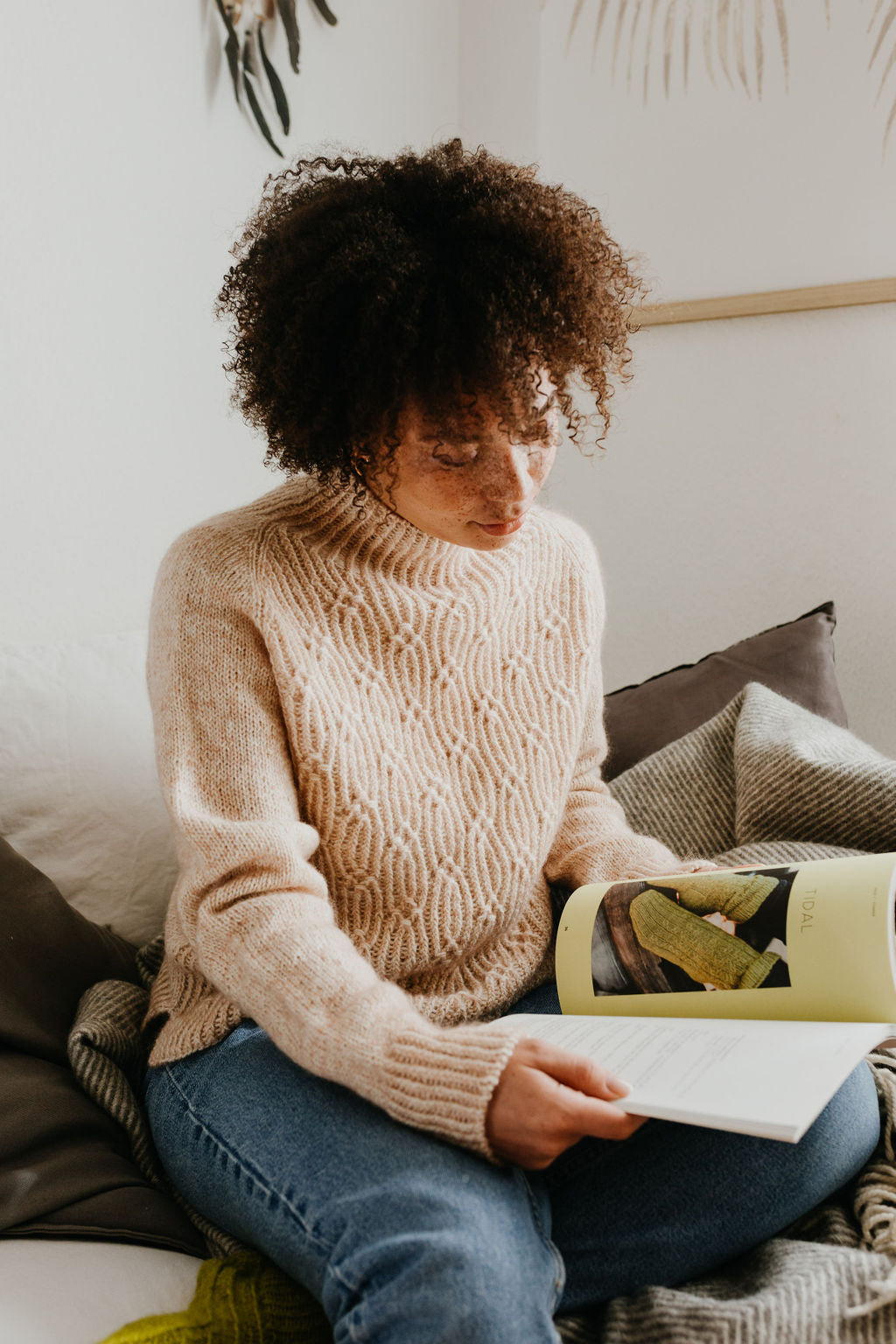
All Books & Magazines
About Us
We're here to help you stitch sustainability into every aspect of your making.
With our carefully curated selection of non-superwash, plastic-free yarns and notions, we have everything you need to get started on your next project - and the one after that.
Here's to a wardrobe of knits we love and want to wear for years to come!
We're here to help you stitch sustainability into every aspect of your making.
With our carefully curated selection of non-superwash, plastic-free yarns and notions, we have everything you need to get started on your next project - and the one after that.
Here's to a wardrobe of knits we love and want to wear for years to come!
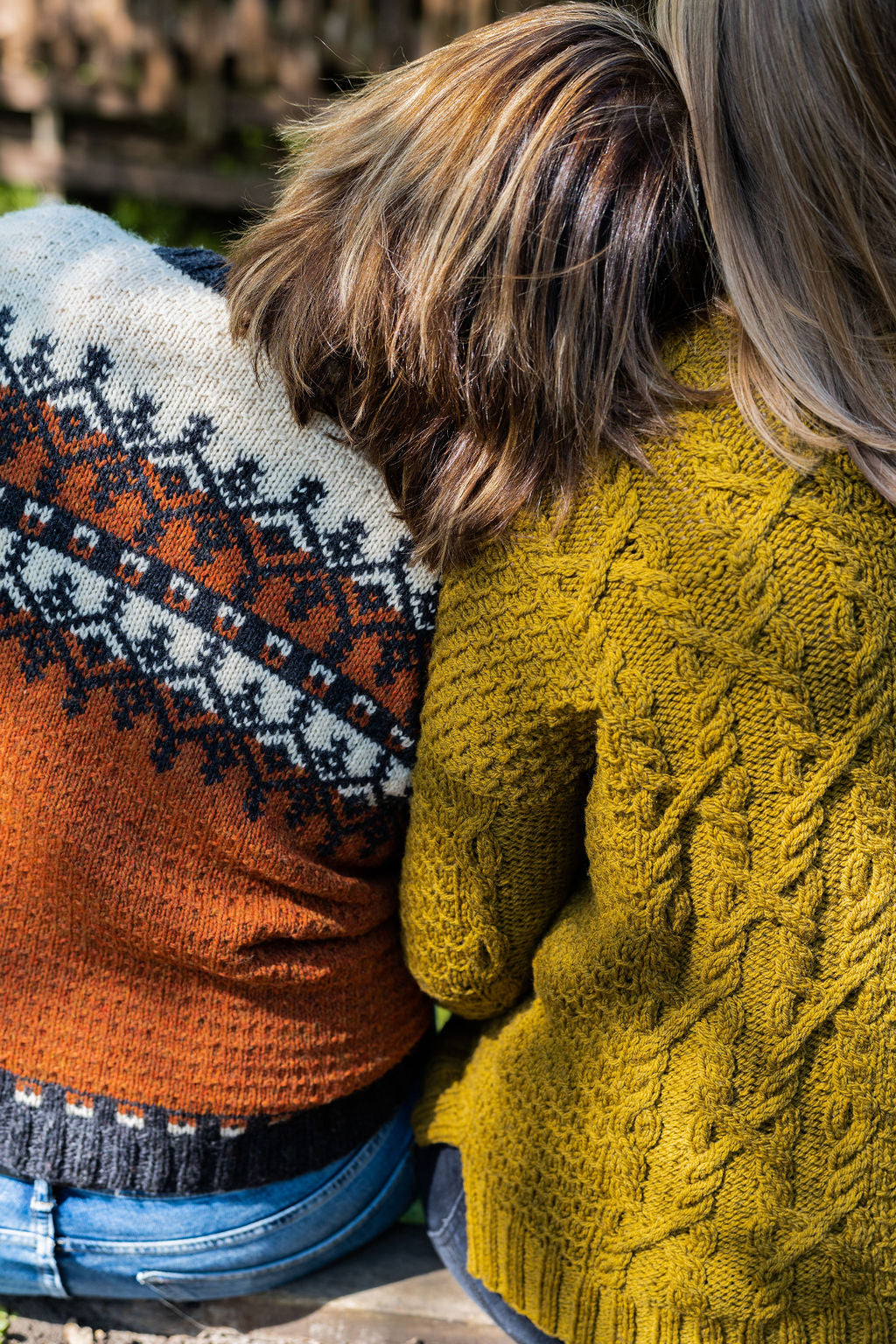
Our Sustainability Pledge

Our Blog
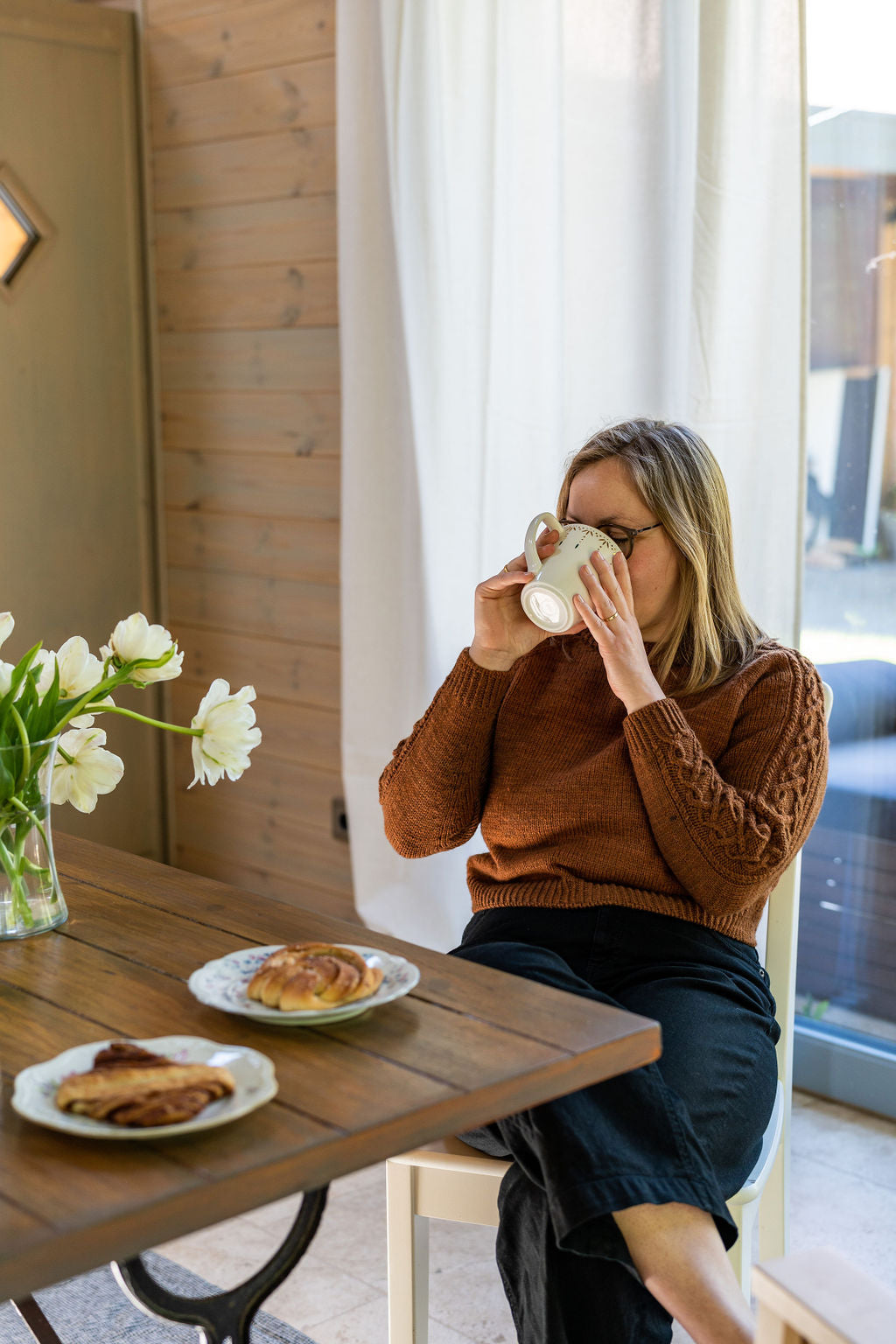
Our Podcast
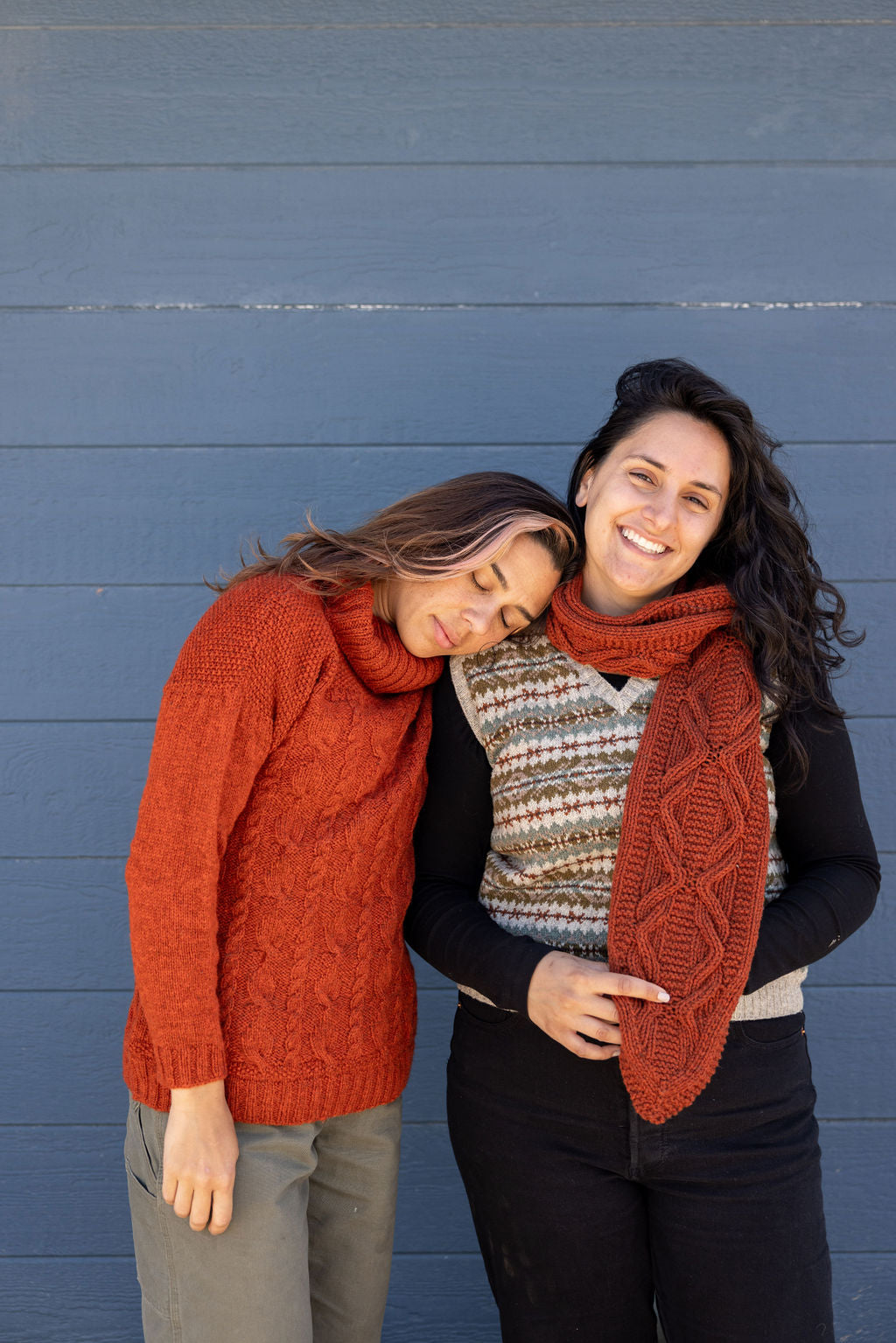
The Making Stories Collective
How To Substitute Yarn
April 28, 2022 7 min read 3 Comments
Get comfy friends, because today we're tackling a pretty big topic, and one that we've been wanting to write about for some time - Substituting Yarn.

While it's lovely to be able to use the suggested yarn, there are lots of reasons why you would choose another.
- It's not physically accessible to you; you like to shop locally, or just don't want to order yarn from the other side of the world.
- It's not financially accessible to you; a sweater's quantity of yarn can get pretty expensive and going with the suggested yarn may not be possible.
- The fibre content won't work for you; if you are allergic or have sensitive skin, not all suggested yarns will work for you, and you want to be able to wear your new FO!
- You simply don't like the suggested yarn; maybe it's the colour options, perhaps the suggested yarn is superwash and you prefer not to use it, whatever it is, it's a big part of the knitting experience and you want to enjoy the yarn you are using.
At the end of the day, you want to make something that you are going to love and wear for years to come. The yarn you use is such a personal thing, and you want to make the right choice. So how do you do that? Let's find out!
_______
The Suggested Yarn
It all starts here. The 'suggested yarn' in a pattern is the yarn the designer has used, not only to knit the sample but as a basis for writing the entire pattern. When it comes to substituting this yarn for another, we will be able to get all the information we need to make the right choice by checking out its specifications.
Let's look at an example. You want to knit Hypata from Issue 7, but it's really hard to find the suggested yarn, Maison Septembre Rustique, where you live. So we're going to look for an alternate, and the best place to start is by checking out the details of Rustique:
Maison Septembre Rustique: Fingering weight (100% wool from France; 400 metres / 437 yards per 100 g, woollen spun).
This tells us everything we need to know to be able to find an alternative yarn, so let's break it down.
_______
Weight and yardage
The first thing I look at is the weight and yardage of the suggested yarn. Why use both the weight and yardage? Because going off the yarn weight alone can be a little misleading. Not all yarns in the same weight category will automatically have the same yardage, they can actually have a huge difference. For example, just like Maison Septembre Rustique, Mominoki's Finnwool and Biches & Bûches Le Petit Lambswool are both considered fingering weight yarns, but Finnwool has 360 meters per 100 g, and Le Petit Lambswool has 496 meters per 100 g. That's a huge difference, and if we are considering using them as an alternative yarn, neither make a great match for the Rustique in terms of yardage.

So what would work with Maison Septembre Rustique's yardage? Let's take a look at Garthenor's Snowdonia Sock instead. Just like the Rustique, it has 400 meters in 100 g, making it a much better fit for this pattern compared to the Finnwool and Le Petit Lambswool.

While it's great to get a perfect match based on the yardage, it sometimes isn't always possible, and that's ok! I find there is definitely wiggle room when it comes to yardage, and as a guide, I try to keep my substitution yarn within 18 m / 20 yds (either over or under) of the suggested yarn. So if Snowdonia Sock was actually 382 meters in 100g, I'd still consider that a great match.
TOP TIP: If you do choose a yarn with a different yardage than the suggested yarn, be careful to purchase the right amount for your project. If the pattern states you need 5 skeins of the suggested yarn for your size, don't automatically assume that 5 skeins of your substituted yarn will also be sufficient. Instead, look at the amount of meters/yards of yarn that is needed for your chosen size, and calculate how many skeins/balls of yarn you would need to order.
Let's look at an example of exactly how to do that. If the pattern you are working from lists that you need 1430 meters of yarn to complete your project, and you are using Biches & Bûches Le Petit Lambswool which has 496 meters per 100 g skein, you would work out how many skeins you need by doing the following calculation:
1430 m / 496 m = 2.88 skeins of yarn, so you would order 3 skeins of yarn.
_______
Fibre Content
Once I have my yardage sorted, the next thing I look at when it comes to substituting yarn is the fibre content. This isn't necessarily something you have to match perfectly to the suggested yarn, or even at all. Remember, you may be substituting yarn in the first place because you can't wear/don't like the fibres in the suggested yarn. It's still, however, something that you should be aware of because the fibre content you choose will have a huge impact on the type of fabric you end up with, and it can really affect the final aesthetic of your new FO.
For example, if you are knitting a pattern with oversized balloon sleeves where the original sample was created with a brushed Alpaca yarn with a lot of drape, and then made the same pattern with a rustic, 100% wool yarn, the outcome would look very different. Instead of soft, drapey sleeves, you'd get dramatic sleeves that have a lot of structure. If that is what you are going for, then perfect, but if you were aiming for soft drapey sleeves like the sample, you may end up disappointed with your final results.
Let's take a look at the fibre content for our hypothetical Hypata. We know that Garthenor's Snowdonia Sock works well in terms of yardage, but how does it do with the fibre? Maison Septembre Rustique contains 100% wool from France and Snowdonia Sock contains 100% organic wool from Romney & Hebridean sheep. So both are 100% wool, still a really good match!
But just like with the yardage, even if your goal is to get an FO as similar to the sample as possible, the fibre content doesn't have to match perfectly. If the suggested yarn is 100% wool, I try to choose a yarn where the main fibre is also wool. For example, If Snowdonia Sock was actually 70% wool and 30% mohair, I'd still class it as a good match for fibre content as the dominant fibre is wool.
Understanding how different fibres affect the fabric of your yarn and your personal preferences takes time and practice. If this is something you'd like to explore a little more, we have a few articles on this blog to help you along. Check out, 'Exploring Fibre: Wool' and 'What Is Drape'.
_______
Woollen v Worsted Spun Yarns
It's becoming more common for yarn companies to list how a yarn has been spun, which is super helpful for us because, just as with fibre content, how a yarn is spun can affect the final fabric that we are creating in many ways, particularly when it comes to drape and stitch definition.
Once you understand the differences between woollen and worsted spun yarns, you start to see why you may prefer one over the other depending on your project. The fibres of worsted spun yarns are combed so they lay parallel to each other before spinning, creating a smooth yarn that gives even, crisp stitches that move smoothly against each other, thus leading to that gorgeous drape. Woollen spun yarns have not been combed, so all the fibre lay haphazardly across each other as they are spun, creating a beautifully light, lofty yarn. Both methods produce beautiful results, but it's worth considering which would be right for your new project.
TOP TIP: Stitch definition can be a tricky thing to determine, but luckily for you, we've written an entire blog post on the subject titled 'Which Yarns Give The Best Stitch Definition'. If you are interested in learning more, be sure to give it a read!
Before we move on, let's see how Snowdonia Sock compares with Maison Septembre Rustique in terms of how it's been spun. We can see that Maison Septembre Rustique is a woollen spun yarn, whereas Garthenor Snowdonia Sock is worsted spun. In this situation, the different spinning methods wouldn't worry me as it's a colourwork project, so I don't have to consider the stitch definition. The only thing to note is that we'd probably get a little more drape with the Snowdonia Sock and potentially lose a little volume at the sleeves. As the sleeves of Hypata aren't very oversized, I'm not too concerned and I'd still be happy continuing with Snowdonia Sock as my substitution yarn.
_______
So you think you have your ideal yarn? Swatch it!
You know that we are big fans of the swatch here, and it's never so important than when you are substituting a yarn. This is where you will do your final check and see clearly what the fabric is like and if you are happy with the yarn for your new project! I know swatching can feel like a chore, but trust me, if the yarn isn't right it's better to know after a couple of hours rather than a couple of weeks or months of knitting. If you need help with your swatching techniques, we have a blog post for that too! 'Swatching For Success' is full of tips and tricks, and if you need a break from reading, we have a video version of it also.
_______
And finally...
Finding the right yarn to use for your new project can be overwhelming, and let's face it, there are so many options to choose from, so if you've read the above and are still feeling unsure, I have one final tip for you; Drop us an email at hello@making-stories.com. We are just on the other end of the internet, and we'd be more than happy to help to point you in the right direction!
3 Responses
Annie Young
May 06, 2022
That was great. I learned a lot 👍🏼
Jennifer Setton
May 05, 2022
Very helpful and informative
Leave a comment
Comments will be approved before showing up.
Also in Blog

What’s the difference between combed top, roving, batts and rolags?
May 08, 2024 5 min read
Learning to spin yarn comes with a huge array of new jargon, and a lot of these terms relate to how the fibre is prepared. Whether animal or plant fibre, there is a variety of ways it can be processed from raw material into something you can spin into yarn.
We’re going to look at some of the common formats available to hand spinners, what their characteristics are and the kind of spinning techniques they’re suitable for.

6 Joyful Spring Knitting Patterns - My Current Favorites!
April 10, 2024 4 min read
Hi lovelies! Spring has sprung here in Berlin – as I am typing this (mid March), the buds on the chestnut tree out the window are a few days away from bursting, the forsythias are in full bloom, and our strawberry plants have started their comeback as well (leaves so far, but Aurin checks every day for berries :)).
So it's no surprise at all that today's blog post is very much inspired by the sun and the warmer days to come! I have put together a sweet roundup of 6 joyful spring knitting patterns, all of which I'd love to have on my needles soon. (If someone can get me an extra day or two per week to knit (oh, and to spin), I'd love that!)
The three yarns I've paired them with are my favorite spring / summer yarns: De Rerum Natura's Antigone, a delightful sport-weight linen yarn, Wooldreamers' Saona, a 50% Spanish cotton, 50% Spanish wool blend, and Natissea's Pernelle, our newest spring yarn: A 100% European hemp yarn!

Get to Know: Pernelle, our first 100% hemp yarn!
April 02, 2024 3 min read 1 Comment
Hi lovelies! As you might know, we are slowly, surely expanding the portfolio of the shop – I am always on the lookout for wonderful sustainable yarns that might fill gaps we still have, and one that was on the list since last summer was an additional spring / summer yarn.
When I learned about Natissea, a French yarn company dedicated to organic plant yarns, from Audrey Borrego last year, I immediately contacted them to order some samples. As soon as I had Pernelle, their 100% European hemp yarn, on the needles, it was love – grippy, but not ropey, with a lovely drape that only got stronger after a good washing and blocking session.
The shade cards had me swooning too – a really comprehensive, well-composed range of colors with something for everyone in it, from neutrals to spring-inspired pastels to deep jewel tones.
So I was so pleased when Natissea accepted us as a stockist – and I am extra excited to introduce Pernelle to you. Our first 100% hemp yarn, perfect for summer tops, T-Shirts, and lightweight sweaters!
I reached out to Mathilde over at Natissea and she graciously agreed to answer a few questions about Pernelle. I loved reading her answers!
Who Is Making Stories?
We're a delightfully tiny team dedicated to all things sustainability in knitting. With our online shop filled with responsibly produced yarns, notions and patterns we're here to help you create a wardrobe filled with knits you'll love and wear for years to come.
Are you part of the flock yet?
Sign up to our weekly newsletter to get the latest yarn news and pattern inspiration!
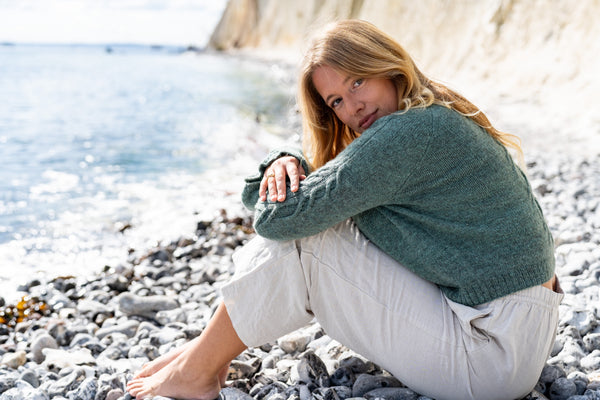
Join the Making Stories flock!
Every Tuesday our newsletter arrives in your inbox, full to the brim with Making Stories goodness. If you would like to join in on the fun, fill in the form below.
As a thank you, we gift you a digital publication of your choice!

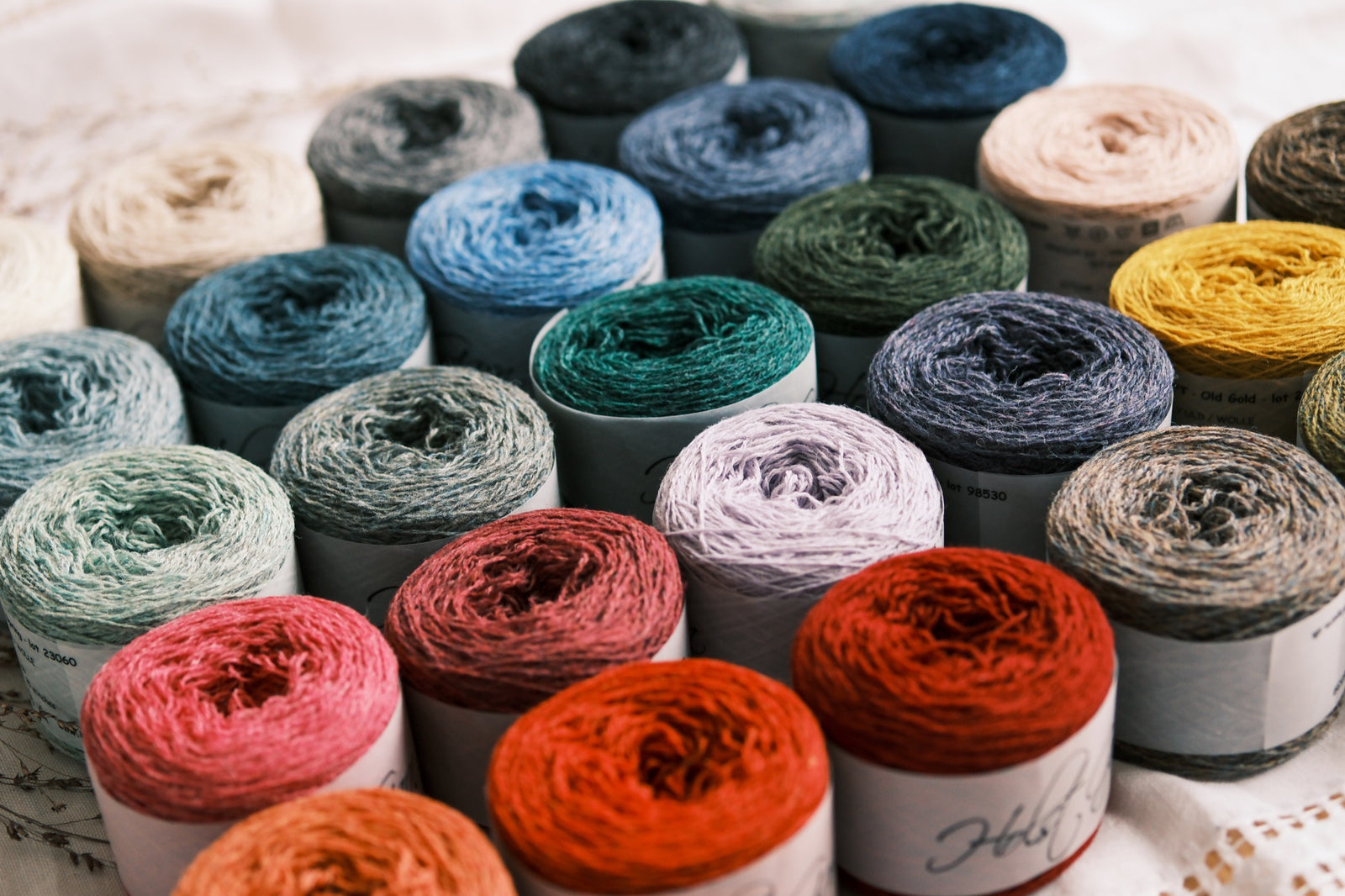


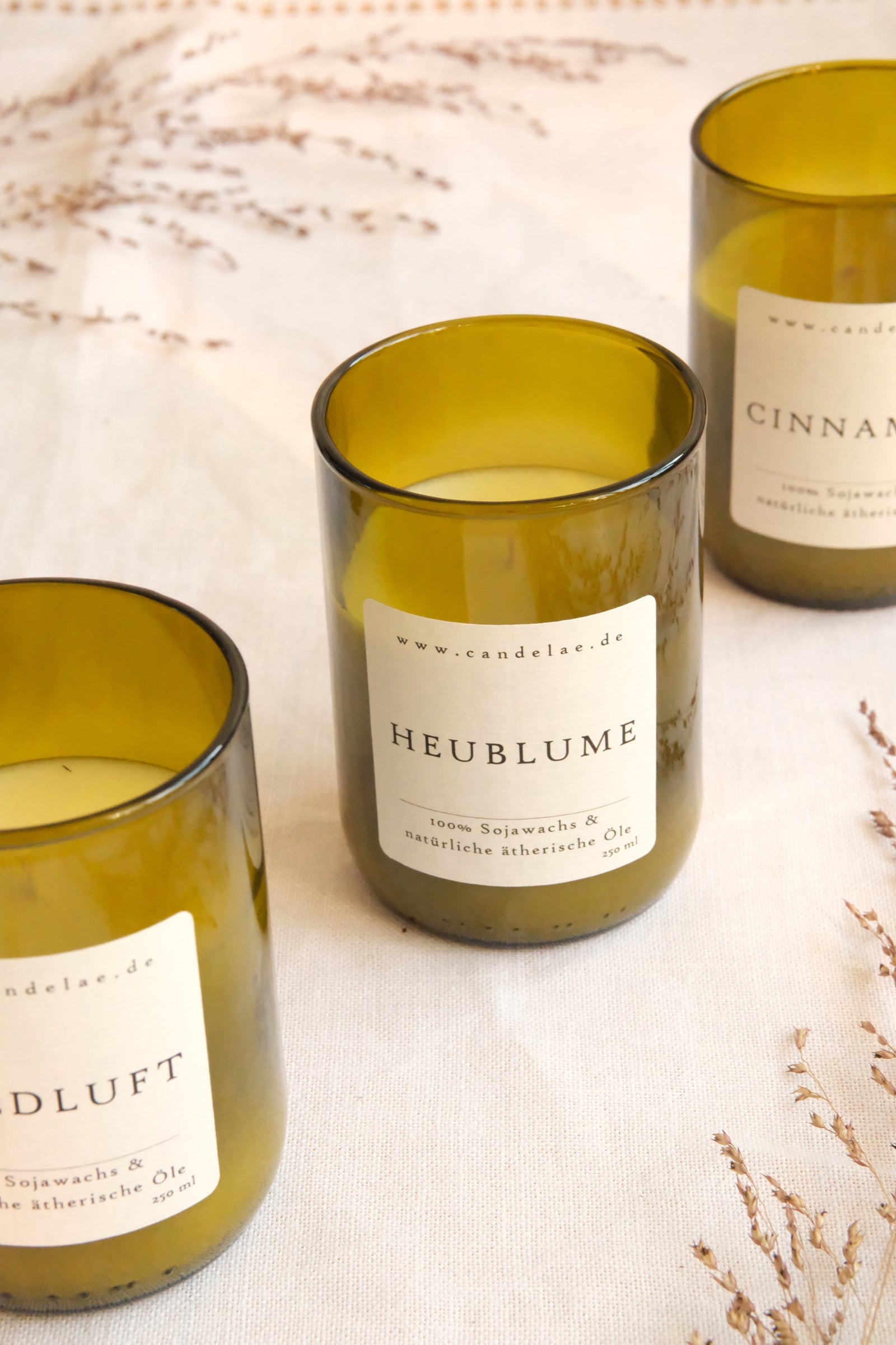

Amanda
August 27, 2022
Really helpful! I learned a lot, thank you!